Aphrodisias, Hierapolis, Ephesus...what next? How about Smyrna? We'd heard of Smyrna long before we knew of the others that we had visited these three days. Aphrodisias was in a fairly remote location, Hierapolis was on a hill outside a village and Ephesus was just a half hour's walk from a small town. But Smyrna? It is bang in the middle of Turkey's third largest city, Izmir. The scale of the site is comparatively small with just the excavated agora open for visitors. One could easily miss it amidst the multi-level parking lots and busy city streets.
In ancient times, the founding of a city was based on a hero or legend
. The re-founding of Smyrna was attributed to Alexander the Great. The geographer Strabo (1st century BC), stated that the city of Smyrna was constructed by Alexander's commanders. No written proof exists of Alexander's visit to Smyrna during his Asian campaign enroute from Sardis to Ephesus. However, Pausanius, the 2nd century geographer, relates that Alexander came to Mt. Pagos (modern day Kadifekale in Izmir) to hunt, fell asleep and dreamt of Nemesis (goddess of divine retribution and revenge) who commanded him to found a city on the spot. According to legend, Smyrneans sought advice on this command from the famous oracle of Apollo at Claros. Apollo answered that "those who live on Pagos will be three or four times happier than before". This legend is depicted on numerous coins of Roman Period Smyrna.
Although many cities were abandoned at the end of Antiquity, Smyrna has been continuously inhabited to the present day, thanks to its position commanding the bay and the harbor
. In the Hellenistic and Roman periods, it developed quickly and became one of the most important in Anatolia, capable of competing with Ephesus and Pergamon. It earned the right to build a temple dedicated to the cult of the Emperor three times. Today, the inner citadel (Kadifekale), the agora, the bouleuterium (council house), the theatre and a small section of the fortification walls can be seen in modern Izmir.
The agora of Smyrna was the city's administrative, political, judicial and commercial center. It was built at the end of the 4th century BC. It acquired its current shape in the 3rd century AD and survived intact till the 7th century AD. It was used as a cemetery in the Late Byzantine and Ottoman periods. Smyrneans built the Gate of Faustina to honor Faustina Minor, wife of Marcus Aurelius, in gratitude for his aid in rebuilding the city after an earthquake in 178 AD.
The very well preserved basement of the Basilica consisted of 4 galleries
. The first and second galleries are covered by 55 arches, built of hewn stone. It is understood that this area was used as a covered bazaar in the period of Late Antiquity. Interesting architectural detail include windows created to provide light and ventilation to the underground area. A water channel runs the length of one of the galleries and was used to distribute water coming to the agora. We spotted water droplets coming out of a spout from a stone pedestal with the words "SMYRNA Agora" engraved on the stone. Above this was a sign "NO DRINKING" in English and Turkish. We astutely divined that these markings came much later than the Hellenistic, Roman, Byzantine (Early and Late) and the Ottoman era, perhaps even to the early 21st century. But the stone inscription on the cult of the Emperor at Smyrna seemed genuine (since it is in Greek, my dear Watson!).
Several of the useful displays provided information on the architectural details (like which direction the doors opened etc
.) but there was one that seemed to be designed to provide mirth rather than information. But truth, as they say, is stranger (certainly funnier!) than fiction. We reproduce it here in its entirety:
"It is known that besides their judicial function, basilicas were also used for commercial purposed such as the daily affairs of businessmen and bankers. The Roman poet Martial relates that in their daily lives the Romans used the agora from morning till noon (3 to 5 hours according to a Roman sundial). He goes on to say that, because of the large number of cases, lawyers became hoarse, that the number of lawyers was not enough to handle all the cases and for this reason it was almost possible for even the statues in the agora to become lawyers. Martial also tells us that there were numerous userers (sic) established in the agora. Water clocks were used in the court sessions and speaking time was allotted to both plaintiff and defendent according to these devices. We further learn from the poet that lawyers brought large numbers of supporters to court with them
. During court proceedings these people acclaimed and booed the speakers".
The ramparts of Kadifekale (Acropolis of Smyrna) date back to the Hellenistic period. It was improved and renovated during subsequent periods with a significant population residing within the castle. The castle was seized by the Turks in the 14th century and named Kadifekale. The castle mosque dates to the beginning of the 14th century. The castle was gradually abandoned from the beginning of the 16th century becoming wholly desolate by the end of the 18th century.
The most striking structure in the castle is the Byzantine Cistern, built in the Late Byzantine period by carving the bedrock. It is calculated to have a capacity of storing 2650 cubic metres of water, thus meeting the needs of 15,000 people. It has survived almost intact to this day. It is quite an astonishing sight to see such a big hollow space beneath the ground.
It was a grey overcast day in Izmir
. The sweeping views of the city from the top of Kadifekale did not make quite the impression that it would have on a clear day. The Aegean sea looked its dullest as the dark clouds gathered overhead. The one sight that did make an impression was the huge sculpture of Ataturk's face carved out of a hillside (a la Mount Rushmore).
We were not quite prepared to be told that the driver of the No. 33 bus to the city centre did not have any change. Everyone else who boarded the bus swiped their magnetic cards on a device and we were the only ones who did not possess those. An elderly gentleman on the bus came to our rescue and donated us two swipes from his card thereby saving us from the prospect of having to disembark. The rain came down hard within minutes of us getting off forcing us to discover Izmir's rain shelters rather than the city itself. The city's famed bazaar did not seem to have a large enough indoor space for us to wait the rain out. So, after a quick meal at a restaurant, we abandoned the city center and got to work on our mission for the day
. Restore the Turkish Homer's Iliad to Tatev, the young university student who had left it behind on the bus from Yerevan to Tbilisi some 20 days ago
But how to find her? We only knew her first name which was not a Turkish one. We knew she was studying Homer's Iliad. Even though the book was in Turkish, she had mentioned that her exams would be in English. We did not know the name of the University but knew it was in Izmir. How many universities in Izmir would have Homer's Iliad in its curriculum? We picked the most prominent Ege University (which had its own Metro station!) after discovering that it had a Department of English. We sped to the outskirts of Izmir and got off at the University station. The rainwater had formed a pool at the station entrance and we waited inside hoping to ask one of the students the way to the Department of English. We did not get much help as a couple of students just shrugged and walked past us. We decided to get into the campus and hope for a directory display or someone who spoke English
.
Every young woman in the campus looked like Tatev (we were hoping to actually meet her and give the book in person) until she got closer. But wait, did we remember to bring the book with us to Izmir? We were staying in Selcuk and were on a day trip to Izmir which was an hour away by train. Of course, we did bring the book with us! What a disaster it would have been to leave it behind in Selcuk and come all this way.
We noticed a small cafeteria within 100m of the entrance and scanned the notice boards for any signs of English. No luck. But we noticed a helpful expression on the face of one of the staff and decided to make him pay for it. He struggled to understand what we were looking for. He handed us over to some people inside an office who were even more helpless. Another staff member asked us to follow him around the cafe. He pointed to a building across the rainy street.
We scooted across the street in the rain and spoke to the first person in that building
. Luckily, she turned out to be faculty and yes, she taught English there! Did she know Tatev? What kind of name is that? Did not sound Turkish at all to her! We clarified that she is a Turkish resident of foreign descent (we did not think we needed to say anything more). She took us inside the office where a clerk queried his computer and came up negative. No Tatev in the directory. We told her the full story about the Homer (we left out the bits about the Trojan horse and Hercules' labors even thought it would have helped pass time on this rainy afternoon) Iliad. She clarified that she taught Basic English (just a few alphabets and words, perhaps an odd sentence or two) in this department. We should probably check with the Department of Literature where it is possible that Homer may be on the curriculum.
So, off we went to another building and did the rounds scanning for Tatev among the students who were busy drinking coffee, smoking cigarettes and writing exams
. We spotted a faculty member who confessed to being an English Literature teacher in the department. She summoned another fellow faculty and asked about Tatev and Homer. They had heard of Homer but Tatev (give me wings!) did not ring a bell. Neither of them had any student with that name. And Homer was not on the curriculum. At least not this year. They were positive that they would know as there were only a handful of English literature students on the campus. But, they would be more than happy to find a student who may put our copy of the Turkish Iliad to good use. (Perhaps even consider including it in the curriculum next year? We chose not to ask). A bespectacled young man walked past and on being asked, nodded his assent and was promptly bequeathed Tatev's book. He walked off with it without much fuss (much like the recipient of the umbrella at the end of the title song in Singin' in the Rain.
Perhaps this was the best outcome. Tatev would have probably bought herself another copy for her exams
. Still, it would have been nice to have run into her. We could have enacted our own variant of the scene in Amelie where she restores a long lost treasure to a man in a cafe. Not to be. Sigh!
We walked back to the Metro and found that what we had bought at our station of origin was a 3-trip ticket pack. As soon as M got past the turnstiles and handed V the ticket, he found that he could not enter. The man at the ticket counter (who showed up after V waited for 5 minutes) said that we will have to buy another 3-pack as that was the minimum. The guard at the turnstile suggested that we request a student for a swipe and we proceeded to do just that in exchange for its cash equivalent. For the second time this day in Izmir, one of its citizens swiped his card for us. What a bizarre ticketing system! Designed only for regular commuters and not suitable for day trippers!
It was dark by the time we got back to Selcuk. Now for the big question. Aphrodisias, Hierapolis, Ephesus and Smyrna
. Four in Four. Did we have enough in the tank for yet another? Troy? The answer was No. While Troy was easily the most well known of the lot, it has the least surviving remains. We had heard of an actual Trojan horse that has been put up there for the amusement of kids, but did not think it worthy of a separate trip. The nearby Gallipoli peninsula also did not hold that much fascination for us despite its monumental importance as the site of a tragic battle in the beginning of the 20th century.
No point in delaying it any longer. It is time to hit the Big Pomegranate.
Google Maps Link
Smyrna - Running on empty and a wild goose chase
Tuesday, November 20, 2012
 İzmir, İzmir, Turkey
İzmir, İzmir, Turkey
Other Entries
-
87The Pink Capital of Armenia
Oct 2625 days prior Yerevan, Armeniaphoto_camera22videocam 0comment 2
Yerevan, Armeniaphoto_camera22videocam 0comment 2 -
88Colors Of The North - Dilijan and Lake Sevan
Oct 2724 days prior Dilijan, Armeniaphoto_camera14videocam 0comment 2
Dilijan, Armeniaphoto_camera14videocam 0comment 2 -
89The Armenian Apostolic Church
Oct 2823 days prior Echmiadzin, Armeniaphoto_camera13videocam 0comment 0
Echmiadzin, Armeniaphoto_camera13videocam 0comment 0 -
90Two Monasteries And A Winery
Oct 2922 days prior Areni, Armeniaphoto_camera9videocam 0comment 0
Areni, Armeniaphoto_camera9videocam 0comment 0 -
91Tatev (Give Me Wings)
Oct 3021 days prior Goris, Armeniaphoto_camera10videocam 0comment 0
Goris, Armeniaphoto_camera10videocam 0comment 0 -
92The Nagarno Karabakh Republic
Oct 3120 days prior Stepanakert, Azerbaijanphoto_camera18videocam 0comment 2
Stepanakert, Azerbaijanphoto_camera18videocam 0comment 2 -
93Homer in Turkish
Nov 0119 days prior Tbilisi, Georgiaphoto_camera1videocam 0comment 1
Tbilisi, Georgiaphoto_camera1videocam 0comment 1 -
94From Caspian Sea To Black Sea
Nov 0317 days prior Batumi, Georgiaphoto_camera11videocam 0comment 1
Batumi, Georgiaphoto_camera11videocam 0comment 1 -
95A Short Distance, But A World Apart
Nov 0416 days prior Trabzon, Turkeyphoto_camera16videocam 0comment 1
Trabzon, Turkeyphoto_camera16videocam 0comment 1 -
96Rock-cut Tombs and a Deep Valley
Nov 0614 days prior Amasya, Turkeyphoto_camera11videocam 0comment 3
Amasya, Turkeyphoto_camera11videocam 0comment 3 -
97Cold and Rainy in the Capital
Nov 0812 days prior Ankara, Turkeyphoto_camera14videocam 0comment 4
Ankara, Turkeyphoto_camera14videocam 0comment 4 -
98Ottoman Architecture and Computer Architecture
Nov 1010 days prior Safranbolu, Turkeyphoto_camera15videocam 0comment 2
Safranbolu, Turkeyphoto_camera15videocam 0comment 2 -
99Fairy Chimneys and Whirling Dervishes
Nov 128 days prior Goreme, Turkeyphoto_camera26videocam 0comment 6
Goreme, Turkeyphoto_camera26videocam 0comment 6 -
100Turquoise Coast
Nov 155 days prior Fethiye, Turkeyphoto_camera18videocam 0comment 2
Fethiye, Turkeyphoto_camera18videocam 0comment 2 -
101Aphrodisias
Nov 173 days prior Geyre, Turkeyphoto_camera21videocam 0comment 6
Geyre, Turkeyphoto_camera21videocam 0comment 6 -
102Hierapolis
Nov 182 days prior Pamukkale, Turkeyphoto_camera22videocam 0comment 2
Pamukkale, Turkeyphoto_camera22videocam 0comment 2 -
103Ephesus - Three in a row!
Nov 191 day prior Selcuk, Turkeyphoto_camera25videocam 0comment 3
Selcuk, Turkeyphoto_camera25videocam 0comment 3 -
104Smyrna - Running on empty and a wild goose chase
Nov 20 İzmir, Turkeyphoto_camera16videocam 0comment 1
İzmir, Turkeyphoto_camera16videocam 0comment 1 -
105Finally in Istanbul!
Nov 211 day later Istanbul, Turkeyphoto_camera23videocam 0comment 1
Istanbul, Turkeyphoto_camera23videocam 0comment 1 -
106The Seat of Ottoman Power
Nov 233 days later Istanbul, Turkeyphoto_camera19videocam 0comment 3
Istanbul, Turkeyphoto_camera19videocam 0comment 3 -
107Both Ancient and Modern
Nov 255 days later Istanbul, Turkeyphoto_camera26videocam 0comment 1
Istanbul, Turkeyphoto_camera26videocam 0comment 1 -
108You know you are in Europe when...
Nov 266 days later Thessaloniki, Greecephoto_camera27videocam 0comment 3
Thessaloniki, Greecephoto_camera27videocam 0comment 3 -
109In the Shadow of the Acropolis
Nov 299 days later Athens, Greecephoto_camera25videocam 0comment 1
Athens, Greecephoto_camera25videocam 0comment 1 -
110The Birthplace of Democracy
Dec 0212 days later Athens, Greecephoto_camera33videocam 0comment 3
Athens, Greecephoto_camera33videocam 0comment 3 -
111Where Homer's Iliad Comes To Life
Dec 0313 days later Mycenae, Greecephoto_camera9videocam 0comment 1
Mycenae, Greecephoto_camera9videocam 0comment 1 -
112Snake Coiled Around A Staff
Dec 0414 days later Epidavros, Greecephoto_camera11videocam 0comment 1
Epidavros, Greecephoto_camera11videocam 0comment 1 -
113Small town life in the Peloponnese
Dec 0515 days later Nafplio, Greecephoto_camera16videocam 0comment 2
Nafplio, Greecephoto_camera16videocam 0comment 2 -
114From Gothic to Modernisme
Dec 1020 days later Barcelona, Spain and Canary Islandsphoto_camera22videocam 0comment 1
Barcelona, Spain and Canary Islandsphoto_camera22videocam 0comment 1 -
115Costa del Sol
Dec 1121 days later Málaga, Spain and Canary Islandsphoto_camera15videocam 0comment 1
Málaga, Spain and Canary Islandsphoto_camera15videocam 0comment 1 -
116Pomegranate in Andalucia
Dec 1424 days later Granada, Spain and Canary Islandsphoto_camera39videocam 0comment 1
Granada, Spain and Canary Islandsphoto_camera39videocam 0comment 1 -
117Where are all the Barbers of Seville?
Dec 1525 days later Seville, Spain and Canary Islandsphoto_camera31videocam 0comment 1
Seville, Spain and Canary Islandsphoto_camera31videocam 0comment 1 -
118On the Rock
Dec 1727 days later La Linea, Spain and Canary Islandsphoto_camera13videocam 0comment 2
La Linea, Spain and Canary Islandsphoto_camera13videocam 0comment 2 -
119Could this place have been any Tangier?
Dec 2131 days later Tangier, Moroccophoto_camera12videocam 0comment 2
Tangier, Moroccophoto_camera12videocam 0comment 2 -
120Hey, Where you from?
Dec 2434 days later Fes, Moroccophoto_camera25videocam 0comment 2
Fes, Moroccophoto_camera25videocam 0comment 2 -
121Twenty-four Hours in the Moroccan Capital
Dec 2636 days later Rabat, Moroccophoto_camera18videocam 0comment 1
Rabat, Moroccophoto_camera18videocam 0comment 1 -
122Play what again? Sam? Nobody by that name here!
Dec 2737 days later Casablanca, Moroccophoto_camera21videocam 0comment 1
Casablanca, Moroccophoto_camera21videocam 0comment 1
Comments
2025-05-22
Comment code: Ask author if the code is blank

 İzmir, İzmir, Turkey
İzmir, İzmir, Turkey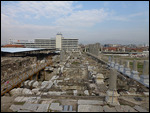
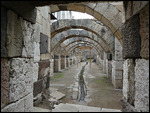
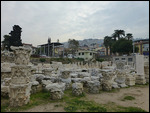
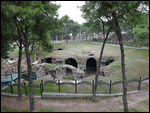
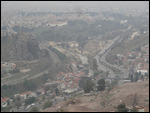
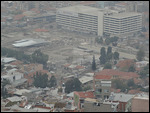

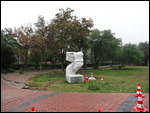
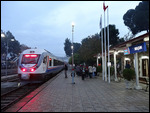
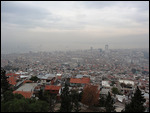
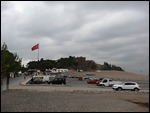
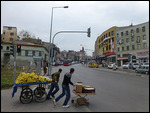







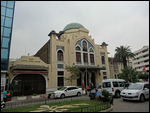
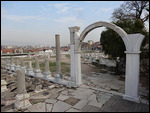
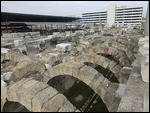
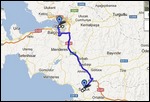
Ramesh
2012-12-09
Fascinating Post. The story of Smyrna beautifully told - it was almost as if I was there. And then the story of trying to locate Tatev - amazed that you went to such lengths, but then perhaps that is the sort of comradeship that traveling brings. One day she is going to read your blog and thank you for trying.
No Troy ??????? I can understand that it might have been too much and that the tank was empty, but missing Troy ?????? Well, you are seasoned travellers, not enamoured by a big name, but still....... You might have felt the ghost of Helen :)